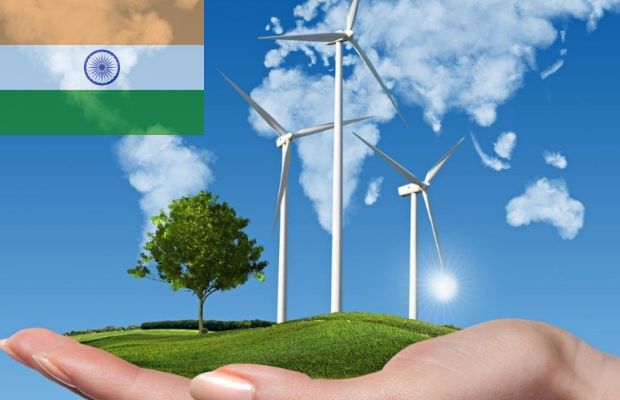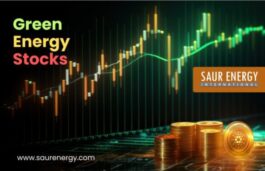Highlights :
- Rajasthan, Karnataka and Tamil Nadu have strong probabilities of emerging as the states that can add most renewable capacity mainly in solar and wind capacities in 2023.
- All of the three states have strong policy backup and industry attraction that can amalgamate to help reach greater installation heights.

The Indian story of renewable energy is actually a story of paradoxes. Thus, even as the country has made remarkable progress in adding renewable capacity, it still fell comfortably short of the 175 GW target for 2022
Nationally, the country today has achieved 168 GW of renewable energy including large hydro power but the travesty is that wind and solar make up barely 120 GW. Rest of the clean energy comes from hydropower. Within the country also, only four states have been able to achieve their 2022 target – Gujarat, Rajasthan, Karnataka and Telangana.
Most Indian states have installed less than half of their targets. Many large states have even shown dismal performance; Take the example of West Bengal for instance that has installed a mere 10% of its target.
The other paradox is that India also added 168 GW of ‘coal fired power capacity’ in the past two decades – exactly double of its solar and wind additions. Thus, renewables currently contribute about 10 per cent of India’s electricity needs.
The success of the Indian RE story depends on the successes of the Indian states. Cooperative and competitive federalism should be followed in letter and spirit to ensure that all states – having thrust on large ones – to achieve their renewable targets that would cumulatively help India to achieve its national goal of 500GW of RE installed capacity by 2030.
Now coming to the states, Gujarat massively expanded its renewable energy infrastructure in 2022. Thanks to the strong policy interventions by the state government and the states batter access to capital and industrial demand- RE growth attracted investors – both global and domestic. That has made Gujarat a runaway winner for the past two years when it comes to capacity additions, besides looking set to become the manufacturing hub for the sector. However, things coud be changing. We look at how some other states might yet catch up, if not steal the thunder from Gujarat in the coming year
Rajasthan: Shedding Its BIMARU Traits
The expansion of renewable energy installations in Rajasthan is an evidence to the fact that the state is shedding its BIMARU trait as far as this sector is concerned. Though its finances are not as hefty as that of Gujarat or Maharashtra, the state has emerged as a top destination for investors from all over the world. All credit to the immense solar irradiance in the desert state and policy evolution.
Rajasthan already has installed renewable energy capacity over 19000 MW. The landscape is dominated by solar energy that has a share of about 14,500 MW. The state also has strong wind potential and present generation capacity is found to be over 4,500 MW.
What makes it stand as a possible winner in 2023 is scores of MoUs, contracts and commitments signed recently for renewables especially in large scale solar power projects. One has to pay heed to the critics that commitments are not actual investments but these MoUs show the confidence of the investors in the changing policy landscape and the potential of sectoral growth in the western state.
Reliance has signed an LoI to invest Rs 1 lakh crore for 20,000 MW solar energy generation. Greenko will set up a 4,500 MW solar-wind hybrid project at a cost of Rs 30,000 crore.
Renew Power proposed to install 10,000 MW of solar PV panels and JSW too wants to install similar solar capacity.
The state has signed scores of MoUs from credible domestic and international players that includes Jakson Green’s pledge to Develop $ 2.8 Billion Green Ammonia and Hydrogen Project, Avaada Group’s Rs 40,000 crore investment for green ammonia and Rays Power’s commitment for 1800 MW solar park.
The giant PSUs of India too are not staying out of the race when it comes to Rajasthan. NTPC will develop a 10 GW Ultra Mega Renewable Energy Power Park. Just recently, BPCL signed a deal to establish renewable projects worth 1 GW of capacity.
Expansion of renewable energy is also an expression of the political economy of a state. The stability in the ongoing RE expansion is expected and although this is an election year for the state assembly, analysts believe that it doesn’t look like Rajasthan will change its RE trajectory whether the government changes or not. Resolution of the issues linked to the habitat of the Great Indian Bustard will allow almost 20 GW of projects to move ahead fast.
Karnataka: The Remaking Of ‘Dwar Samudra’
What props up Karnataka as the possible winner of 2023 is that it already has established its credibility in the RE sector. Today, thermal power plants supply a mere third of the state’s power demand and wind, solar & hydro supplies the rest. The state has 16-GW of solar and wind capacity and tops in terms of grid connection. It looks like the most active participant at electricity exchange and exports a good quantum of power outside the state.
Karnataka has best renewable energy dynamics as its building capacities in hydrogen, hydropower, ammonia, wind and also energy from waste. As per top government officials, the state has already achieved Prime Minister’s 2030 target and will only go higher from here.
One should just look at the balance – Karnataka has about 8000 MW of solar energy and has added more than 5100 MW of wind capacity.
According to a top industry source, the state may look to exploit its high offshore wind energy potential this year. This may look like justifying its ancient name of ‘Dwar Samudra’ or – the gateway to the seas. The Karnataka Renewable Energy Development Ltd (KREDL) has set out to generate an additional 1.2-lakh-MW of wind energy by exploiting potential in every taluk across forests, cultivable and wasteland. Hybrid of solar and wind will come up at taluks having lower CUF.
The commitments from global investors are no less than that of Rajasthan when it comes to Karnataka. At Windergy 2022, the industry signed for 9,218 MW of wind capacity with a proposed investment of Rs 61,227 crore. The commitments came mainly from ReNew Power (1,578 MW), Azure Power (1,700 MW), O2 Power (1,240 MW) and Torrent Power (750 MW).
Chief Minister Basavaraj Bommai has backed greater RE growth. His presence at World Economic Forum (WEF) at Davos helped in the culmination of commitments hovering over Rs 2 lakh crores from renewables conglomerates. ReNew Power will be investing Rs 50,000 crore in Karnataka over a period of seven years across renewable energy, battery storage and green hydrogen. Adani seems to be hovering around Rs 50,000 crore. Another same quantum of investment will come from ACME Cleantech Solutions for green hydrogen and ammonia projects. Ayana Renewable Power will invest in 2-GW of renewables with an investment of 12000 crores.
ABC Cleantech announced an investment of Rs 50,000 crore during ‘INVEST Karnataka 2022’ for setting up a green hydrogen production unit.
Tamil Nadu: Benefiting From Decades Old Governance Trajectory
Tamil Nadu has often inspired other states and even Central Governments in terms of policy formulation and governance irrespective of the political shifts. The adoption of its robust health and education sectors policies in other parts of the country are a testimony of its governance model. Its dash in renewable energy has taken the state to an installed capacity of 19.8 GW that contributes 12 per cent of the total power generation.
Tamil Nadu’s total solar capacity increased to 4,894 MW with a balanced mix of ground-mounted, rooftop and off-grid capacity as of January 31, 2022 and the wind capacity grew to 9,857 MW on the date.
It has maintained a strong solar and wind balance which supports the grids better than anywhere else. The solar generation peaks during the daytime while power generated by wind sources is high in the twilight and night hours. Its energy requirements are met even during the monsoon, when sunlight is weak and wind energy is higher which keeps the power systems running.
Renewables are ought to grow in the energy mix of the state as the state is already consuming nearly 50 per cent of power from renewable sources.
When reconstructing the future of the state in terms of renewables, we should look at the announcement of National Investment and Infrastructure Fund Ltd (NIIFL) with the Tamil Nadu Infrastructure Development Board (TNIDB) to invest thousands of crores in infrastructure including renewables in the southern state.
The Global Wind Energy Capacity Council (GWEC) said that Tamil Nadu may be adding 25 GW of new wind capacity by 2030. The state has already plans in the pipeline for 13 GW by the end of this decade. In this line, the National Institute of Wind Energy (NIWE) has issued a tender for a 4-GW offshore wind project off Tamil Nadu coast recently in November. Despite limited wind resources, the state has championed this segment when nationally wind energy has been relegated to the backburner.
Talking about solar, Tamil Nadu Generation and Distribution Company (TANGEDCO) has formulated a plan to develop solar power projects for the generation of a huge 20,000 MW green energy in the next 10 years. As per the reports, Tamil Nadu will first add 4000 MW of solar power with energy storage infrastructure will be installed in the state.
Also, Denmark had recently committed an investment ranging $ 5 to 10 billion in Tamil Nadu renewable energy capabilities. Denmark has championed offshore wind energy and it will help in the development of a wind park in the Gulf of Mannar that will have a capacity of 4-10 GW.
All the three above mentioned states have strong policy backup, reforms and hunger for renewables. Potential in both solar and wind segments in all the three states makes the fight to become the winner in 2023 ‘neck to neck.’






























